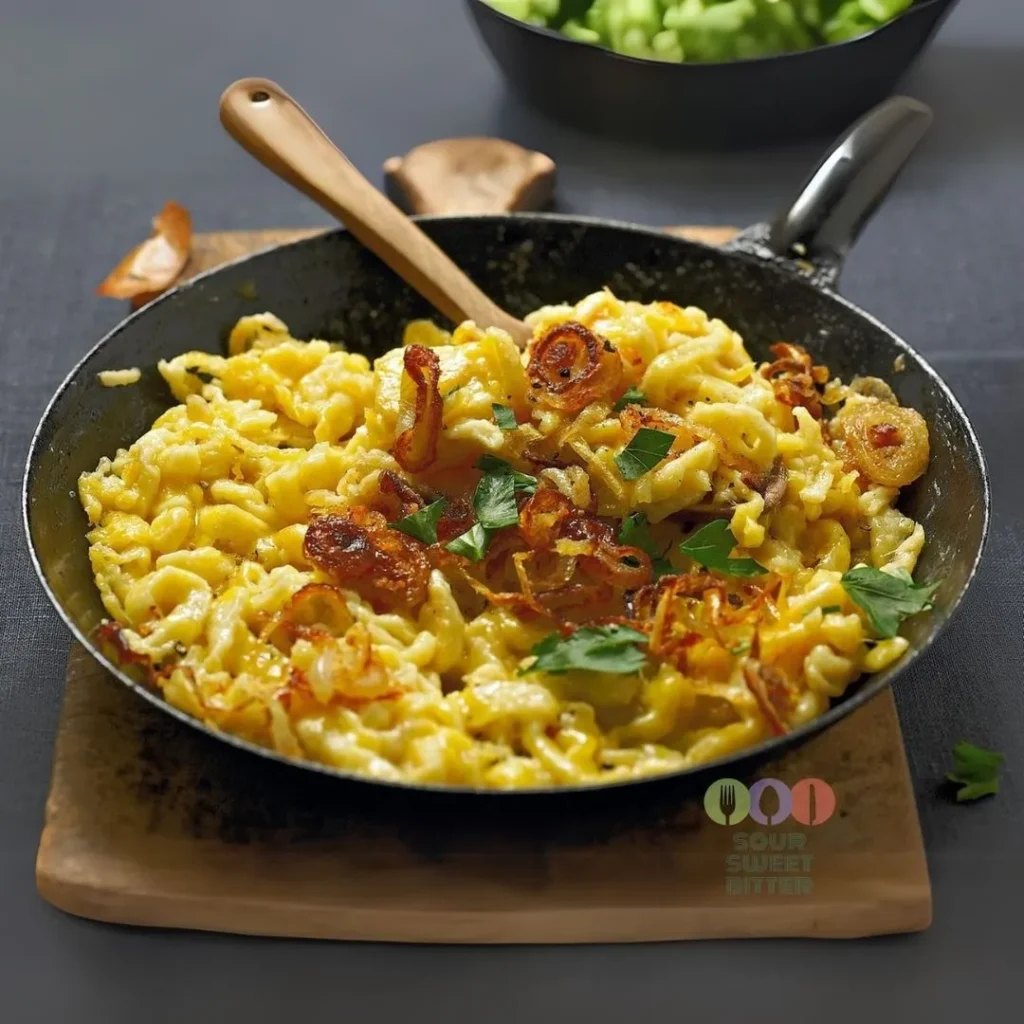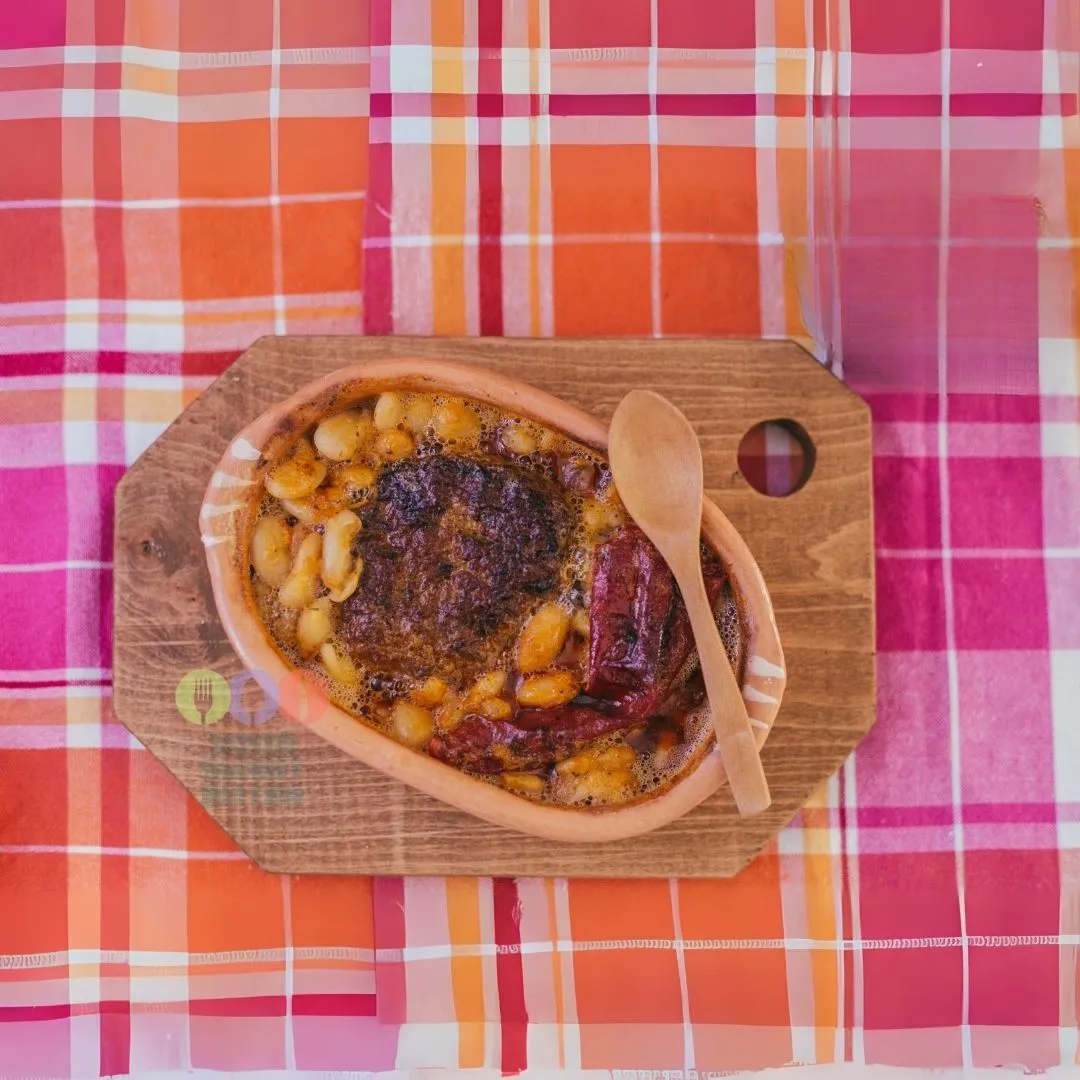Käsespätzle: A Savory German Classic
Embodying the heart and soul of German cuisine, Käsespätzle is a rich, cheesy noodle dish often likened to mac and cheese but with a unique German flair. Originating from rural Germany, this comforting meal has evolved into a beloved symbol of Southern German culture, cherished by both locals and tourists.
From Humble Beginnings to Culinary Delight
Käsespätzle hails from the Swabian region of southern Germany, where it was a staple in farmers’ diets. Initially, it was a practical dish made to utilize extra eggs and flour, forming soft, doughy noodles called Spätzle. The addition of cheese transformed these simple ingredients into a hearty, satisfying dish that sustained hardworking families through long days.
The Craft of Spätzle Making
A hallmark of Käsespätzle is its noodle preparation. Traditionally, the dough is pushed through a Spätzlehobel (a grater-like tool) into boiling water, forming irregular, bite-sized pieces. This handmade process gives Käsespätzle its rustic charm and distinctive texture. The noodles are then layered with grated cheese, often Emmental or Gruyère, and baked to a golden, bubbling perfection.
A Dish of Unity and Celebration
In German culture, Käsespätzle is more than just food—it’s a communal dish that brings people together. Served in large portions, it’s a centerpiece at family dinners, festivals, and local taverns. Its warm, cheesy aroma evokes feelings of home and comfort, making it a popular choice during colder months and holiday gatherings.
Käsespätzle in the Modern Era
Today, Käsespätzle holds a prominent place in both traditional and contemporary German cuisine. It’s a highlight on menus at alpine lodges, providing essential sustenance after a day of skiing. In urban areas, trendy restaurants have given the dish gourmet twists, adding ingredients like caramelized onions, mushrooms, or fresh herbs. Despite these innovations, the essence of Käsespätzle remains its simplicity and authenticity.
A Global Comfort Food
Käsespätzle has gained international acclaim as an exemplar of German comfort food. Visitors to Germany often fall in love with the dish and attempt to recreate it at home. Its global popularity underscores the universal appeal of its rich, cheesy flavor and handmade noodles.
A Culinary Tribute to German Heritage
Käsespätzle is more than just a meal—it’s a celebration of German culture, history, and the enduring spirit of togetherness. From its origins in Swabian kitchens to its status as a modern comfort food, the dish narrates a story of resourcefulness and culinary ingenuity. Whether savored in a rustic mountain chalet or a bustling city restaurant, Käsespätzle offers an authentic taste of Germany’s soul.
Discover Traditional Recipes from Germany Discover Traditional Recipes from Europe You may like this also: American Buffalo Wings 10 Traditional German Recipes
German Cheese Spaetzle Käsespätzle
Ingredients
Instructions
-
Prepare the 1000 g of spaetzle in boiling salted water according to the instructions on the packet. Drain and set aside.
-
Now halve the 300 g of onions, peel them and cut them into fine half rings. Mix them in a small bowl with 3 tablespoons of wheat flour.
-
In a very large pan, heat 50 g of clarified butter and fry the floured onion rings on a medium to high heat until they are nice and golden brown (this takes a bit of patience!). Add a little salt. Meanwhile, grate 250 g of spicy hard cheese into coarse shavings.
-
Take the onion rings out of the pan and place them on some kitchen paper so that they can drain a little.
-
Now reduce the heat of the stove briefly so that the 75 g of cream does not boil away too quickly when you add it to the pan. Season with 1 pinch each of nutmeg, salt and pepper.
-
Now put the finished spaetzle in the pan and mix them with the cream. Then sprinkle the grated cheese on top and stir it in.
-
Your homemade German Cheese Spaetzle Käsespätzle is ready. Guten Appetit!














